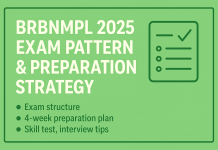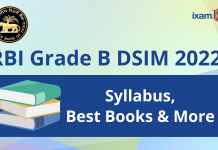English Language Preparation for Bank Exams
Let’s Talk English Again!!
Bank jobs are one of the most sought-after jobs in the current times. Securing a bank job, irrespective of the post is considered a successful move these days and to do that, you need to appear in various exams conducted by IBPS (Institute of Banking Personnel Selection) which is responsible for the recruitment in various banking organizations. Coming to the examination part, most of the candidates have a common fear when they prepare for these examinations which is the English Language section. ‘English’ seems to be a dreadful word for them, as they find themselves in a tough spot while attempting this section. In the previous part of this blog series, we discussed the chapters, tips and tricks related to English Language section, which intended to give some clarity regarding what to expect and prepare in this section.
The pattern of the banking exams have been ever-changing and the difficulty level has gone higher along with it. The pattern of the questions also keeps changing which increases the difficulty level of the paper overall, thus increasing competition. Therefore, it is necessary to stay updated with all new changes in order to prepare well. Thus, we will discuss all the new pattern questions step by step that are appearing in the bank exams these days and that may help you prepare better.
New Pattern English Questions in Bank Exams
The chapters in English Language remains all the more same, from which the questions are picked up. The difference lies in the way of asking those questions. Usually the examiner will twist the question in a way which leads to confusion and panic among the candidates without realizing that the basic type of the question remains the same.Therefore, there is nothing to be afraid of in such cases. You just need complete information and practice to nail the section.
1.Reading Comprehension
As discussed earlier, this is a section which needs reading & comprehending. Most of the students confuse it with just ‘reading’ a paragraph or comprehension passage given, and answer the questions. But, that’s not what it actually is. You need to read, understand (comprehend) the context and then answer the questions given below. The paragraph will not contain too much of direct questions and thus you will have to scan the paragraph well and understand the main theme and then answer the questions given below. Till now, there was a common type of RC or Reading Comprehension that was asked regularly in all the competitive examinations. Though, now the pattern is changing. Let’s discuss both the types:
Pattern 1 – Regular
The regular type that is asked in most of the exams is where you are given a single comprehension passage which can be based on any subject, e.g. Economy, Finance, History, Current Affairs, Science etc. Depending on the subject, the difficulty level can be determined. What you need to do is scan the passage once, try to read between the lines and understand the gist of it. You need to read it as swiftly as you can and in a way that you are able to summarise it in a proper way and then answer the questions that follow. The questions can be deep or sometimes straight from the content of the passage. Some questions may demand your deep understanding of the topic being discussed in the passage. This pattern is a simple one.
The trick here is to also scan the questions, just as you scan the passage, so that you know which question is easier to attempt first and which one is time-consuming. That would help in improving your speed and efficiency.
Example Question:
Directions: Read the following passage carefully and answer the questions given below it. Certain words/ Phrases have been printed in bold to help you locate them while answering some of the questions.
A new international report has drawn attention to the deadly pollutants that pervade the air that people breathe in India, causing terrible illness and premature death. The State of Global Air 2017 study, conducted jointly by the Health Effects Institute and the Institute of Health Metrics and Evaluation, quantifies further what has been reported for some time now: that the concentration of the most significant inhalable pollutant, fine particulate matter with a diameter of 2.5 micrometres or less (PM2.5), has been growing in India. The rise in average annual population-weighted PM2.5 levels indicates that the Centre’s initiatives to help States reduce the burning of agricultural biomass and coal in Punjab, Uttar Pradesh, Rajasthan, Haryana and Delhi have failed. The directions of the National Green Tribunal to Delhi, which were reviewed last year, could not end open burning of garbage and straw, or curb the urban use of diesel-powered vehicles. It comes as no surprise, therefore, that the weighted national PM2.5 level estimated in the international report rose from 60 micrograms per cubic metre in 1990 (the acceptable limit) to 74 in 2015, with a steady rise since 2011. Weak policy on pollution is leading to the premature death of an estimated 1.1 million Indians annually, and the number is growing, in contrast to China’s record of reducing such mortality.
Several studies show long-term evidence of a steady deterioration in air quality in many countries, and South Asia, dominated by India, is today among the worst places to live. Although the central role played by burning of crop residues in causing pollution is well-known, and the Indian Agricultural Research Institute proposed steps to convert the waste into useful products such as enriched fodder, biogas, biofuel, compost and so on, little progress has been made. Last year, helpless farmers in the northern States who wanted to quickly switch from rice to wheat burnt the waste in the fields, in some cases defying local prohibitory orders. The government has no one to blame but itself, since it has not been able to supply affordable seeder machinery in sufficient numbers to eliminate the need to remove the straw. In a country producing about 500 million tonnes of crop residues annually, the issue needs to be addressed in mission mode. Easy access to cheap solar cookers and biogas plants will also cut open burning, and help the rural economy. Yet, there is no reliable distribution mechanism for these. On the health front, it is a matter of concern that in the most polluted cities, even moderate physical activity could prove harmful, rather than be beneficial, as new research indicates. India’s clean-up priorities need to shift gear urgently, covering both farm and city.
Que. According to the passage, what steps should be taken to curb the rising air pollution?
(A) To burn the crop residues which is causing pollution.
(B) To convert the crop residues into useful products such as enriched fodder, biogas, biofuel, compost, etc. to avoid burning the residues.
- Only (A)
- Only (B)
- Both (A) & (B)
- Neither (A) nor (B)
- None of these
Ans: 2
To convert the crop residues into useful products such as enriched fodder, biogas, biofuel, compost, etc. to avoid burning the residues.
Que. Choose the word or group of words which is MOST SIMILAR in meaning to the word ‘pervade’ as used in the passage.
- Pollute
- Cleanse
- Purify
- Aggravate
- None of these
Ans: 5; None of these.
In this case, pervade means being present & apparent throughout.
Now, as we can see, the first question here is a contextual question, which demands your understanding of the topic, whereas the second question tests your vocabulary and knowledge of words.
The trick: Whenever you come across such a question related to vocabulary, it does not necessarily mean that only if you know the meaning, you can answer it. If you read the passage well, you will be able to understand its usage and thus its meaning and will get enough clue by looking at the answer options.
Pattern 2 – New
These days the candidates get a new pattern of RC in the exams, where the single lengthy comprehension passage is replaced by different short passages which are followed by a set of questions, that maybe randomly or asked in order. The type of questions will remain the same as in the traditional RC pattern.
What’s different?
The only trick here is to confuse the candidates by giving more than one passages pertaining to different contexts. How does it create a confusion?
- Visibly it brings panic in the mind of candidates, seeing number of passages. But they don’t realize that they are small passages,which won’t take much time to read over.
- The difficulty level may seem high because it takes some time to grasp the idea of one passage and settle it, and soon after you need to answer another question from some other passage with some other theme and idea. Thus, you may be in need of improvement in your reading and comprehension skills. That may come only through regular reading.
Example Question:
Directions: Read the following passage divided into a number of paragraphs carefully and answer the questions that follow it.
Paragraph 1: From August 19 to 30, Taiwan’s capital Taipei will host more than 7,700 student athletes from 153 countries for the 2017 Summer Universiade. The latter is the premier international multi-sport event for University athletes who consider it to be a stepping stone to participation in the Commonwealth Games, Asian Games and the Olympics. The Taipei Universiade will see the young athletes vie for laurels in 21 sports at 38 different venues. In fact, this Universiade will be the largest international sporting event in Taiwan – a big feat for this island nation of 23 million people.
Paragraph 2: But what’s even more important for Taiwan is that the Universiade is an opportunity for it to broaden its international engagements and build ties of friendship. As is well known, Taiwan has official diplomatic ties with a handful of small countries. Saddled by the historical baggage of the Chinese civil war that forced the Kuomintang to flee to Taiwan and transplant the Republic of China, the Taiwanese today continue to navigate complicated narratives of identity and state. Add to this the fact that an overwhelming majority of countries in the world recognise only one China, which being the People’s Republic of China, and it’s easy to see why Taiwan has had to find creative ways to keep its diplomatic and strategic depth intact.
Paragraph 3: And one of the ways in which Taiwan has done that – and continues to do so – is to become a giver. It has tried its best to share its successes with the rest of the world, be it through outbound investments, manufacturing and research collaboration, or medical aid and technical assistance. Of course, all of this hasn’t been easy with China constantly pressuring Taiwan to toe its line of eventual reunification. However, the reality is that Taiwan today is very different from China. The former has evolved into a robust multi-party democracy, while the latter has become a Communist powerhouse. Plus, the new generation in Taiwan has no real attachment with China. And having grown up in a free-thinking, democratic atmosphere, it is hard to see Taiwanese youth even consider re-unification with the mainland.
Que. What are the Taiwan’s efforts to make its own identity as a nation?
(I) Taiwan’s youths are not interested in re-unification of their nation with China.
(II) Taiwan is building diplomatic and friendly relations with other countries.
(III) Taiwan is sharing its outbound investments, manufacturing and research collaboration, or medical aid and technical assistance with the rest of the world.
(IV) Taiwan is welcoming young people for Summer Universiade, which is to be held in Taiwan giving young talents the opportunity to explore their capabilities as well as giving Taiwan to broaden its international engagements.
(a) Only (I) is correct
(b) Both (I) and (II) are correct.
(c) Both (II) and (IV) are correct
(d) Only (II), (III) and (IV) are correct
(e) All are correct
Ans. (e)
Explanation. All of the above statements are true. All of the given statements contribute to make Taiwan as its own identity as a nation.
In a similar way, the examiner can ask questions relating to some other paragraph randomly. You will have to shift your focus swiftly from one theme to another and effectively answer the questions. The short length of the paragraphs may reduce the difficulty level to some extent, if you are good at grasping the content theme.
For more chapters and questions related to them,stay tuned to our ixamBee blog section.
Read more about the English Language question types and preparation tips.
Get Free Online Test Series, Daily GK Update, PIB Current Affairs, Banking Awareness as well as latest updates for Bank PO, Bank Clerk, SSC, RBI, NABARD and Other Government Jobs. центрофинанс займ онлайнбыстрый займ ногинскмфо займ-онлайн















